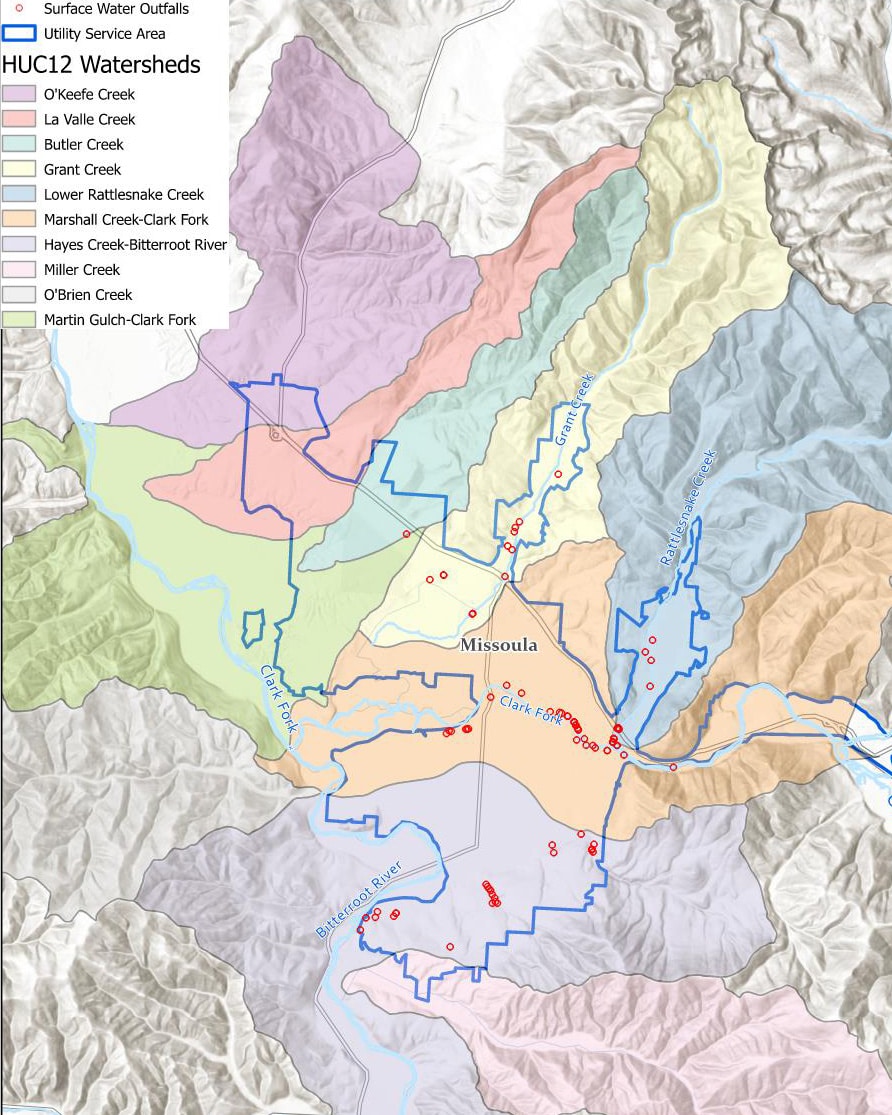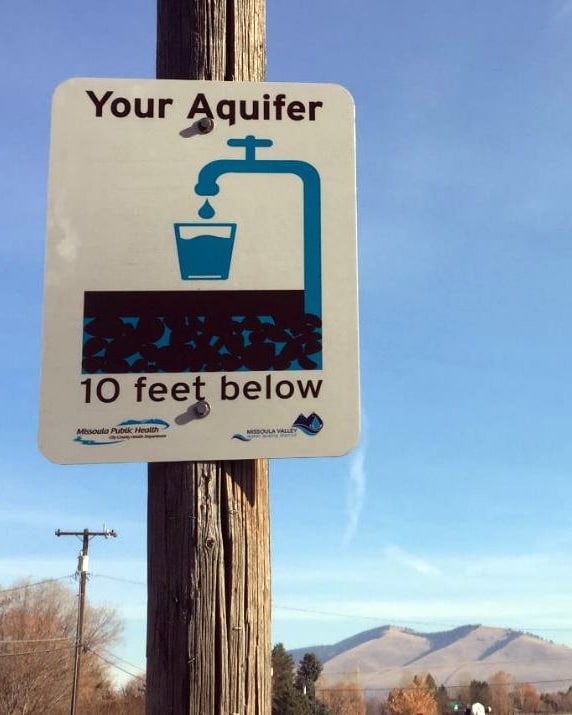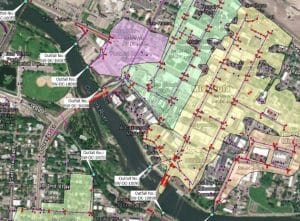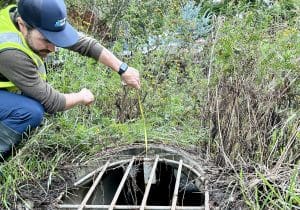
Comprehensive Stormwater Quality Plan
An Informed Approach to Protecting Missoula’s Water Resources
Morrison-Maierle assisted the City of Missoula with a Comprehensive Stormwater Quality Plan.
Imagine a rainy day in Missoula. As rain pours over rooftops, streets, and sidewalks, it picks up dirt, oil, and other pollutants. This stormwater runoff flows into pipes that discharge into ditches, streams, or dry wells, allowing the water to infiltrate into the ground. If unmanaged, stormwater can lead to flooding and degrade the quality of both surface water and groundwater.
In Missoula, where the community relies heavily on the Clark Fork and Bitterroot Rivers and the Missoula Valley Aquifer, stormwater management directly impacts public health, wildlife, and development. Non-point source pollution—like stormwater runoff—is one of the leading causes of water quality impairment in the region.
Services and Highlights
-
Assessments and report
-
Capital improvements
-
Data collection
-
Master planning
-
Modeling
-
Regulatory compliance
-
Water quality recommendations
-
Water resource study


Missoula’s Data-Driven Stormwater Plan
To address these challenges, the City of Missoula developed the Comprehensive Stormwater Quality Plan—a strategic blueprint to better manage runoff and protect local water resources. The plan focuses on four key areas:
- Basin characteristics and delineations
- Hydraulic modeling
- Water quality-focused capital improvement plan
- Research and recommendations related to stormwater quality
This data-driven approach prepares the city to meet current and future stormwater challenges, especially those posed by climate change, population growth, and evolving regulations.
Why it Matters: Missoula’s Water Resources
Missoula’s rivers and aquifer aren’t just natural landmarks—they’re vital to drinking water, recreation, and wildlife. The city’s stormwater utility is committed to protecting these resources, recognizing the need for proactive, informed management.
To support this mission, the city partnered with Morrison-Maierle to develop a comprehensive plan that provides actionable insights, priority projects, and long-term strategies.
What the Plan Covers
The Comprehensive Stormwater Quality Plan has four main elements. Each chapter of the plan dives into a different aspect of stormwater management, helping the city make informed decisions about infrastructure and policy.
The Four Sections
Chapter 1: Drainage Characteristics
This chapter analyzes 30 key drainage areas that contribute to high-priority stormwater outfalls. It details the land use, soil types, and contributing areas for each basin—information that helps the city estimate runoff volumes and identify where existing infrastructure may be undersized or underperforming.

Basins delineated in downtown Missoula.
Chapter 2: Model Development
To better understand how stormwater moves through the system, a detailed hydraulic model was developed for Missoula’s largest drainage area—over 9,800 acres in the South Hills that discharge to the Bitterroot River. This model provides the city with quantified flow rates and volumes anticipated at the outfall and other key locations in the system.

Chapter 3: Capital Improvements Plan
Using insights from the model and water quality data, the Capital Improvements Plan outlines 10 priority projects for the next decade. Each project includes a concept design, estimated cost, and focus area—such as water quality treatment or infrastructure replacement. The result is a clear implementation roadmap for the Stormwater Utility.

Staff assess infrastructure for the capital improvements plan.
Chapter 4: Water Quality Recommendations
The final chapter presents a range of tools and resources for managing stormwater and enhancing water quality. It begins with an overview of Missoula’s stormwater system, providing essential context about the area’s unique characteristics.
The chapter also includes a summary of current research on stormwater infiltration and groundwater, which will help guide the city’s stormwater utility in evaluating management strategies and protecting resources. These resources offer valuable insights and options to support the city’s decision-making in stormwater and water quality management.
With the Stormwater Quality Plan, the city is poised to make strategic choices that will positively impact the health of its waters and streamways for years to come.
Learn more about how our stormwater capabilities.Related Projects

Billings Airport Storm Drainage System
Billings-Logan International Airport needed a solution to control the large stormwater events on the airfield, put the water in a new pond structure, and drain them to a creek.

Caras Park Stormwater Treatment and Park Improvements
The Caras Park Stormwater Treatment and Park Improvements project combined two projects into one to help the City of Missoula reduce closure time and save construction costs.

City of Sidney Stormwater Master Plan
Morrison-Maierle helped the City of Sidney with its its first-ever Storm Water Master Plan, creating a guide for improving infrastructure, managing flood risks, and planning capital improvements.